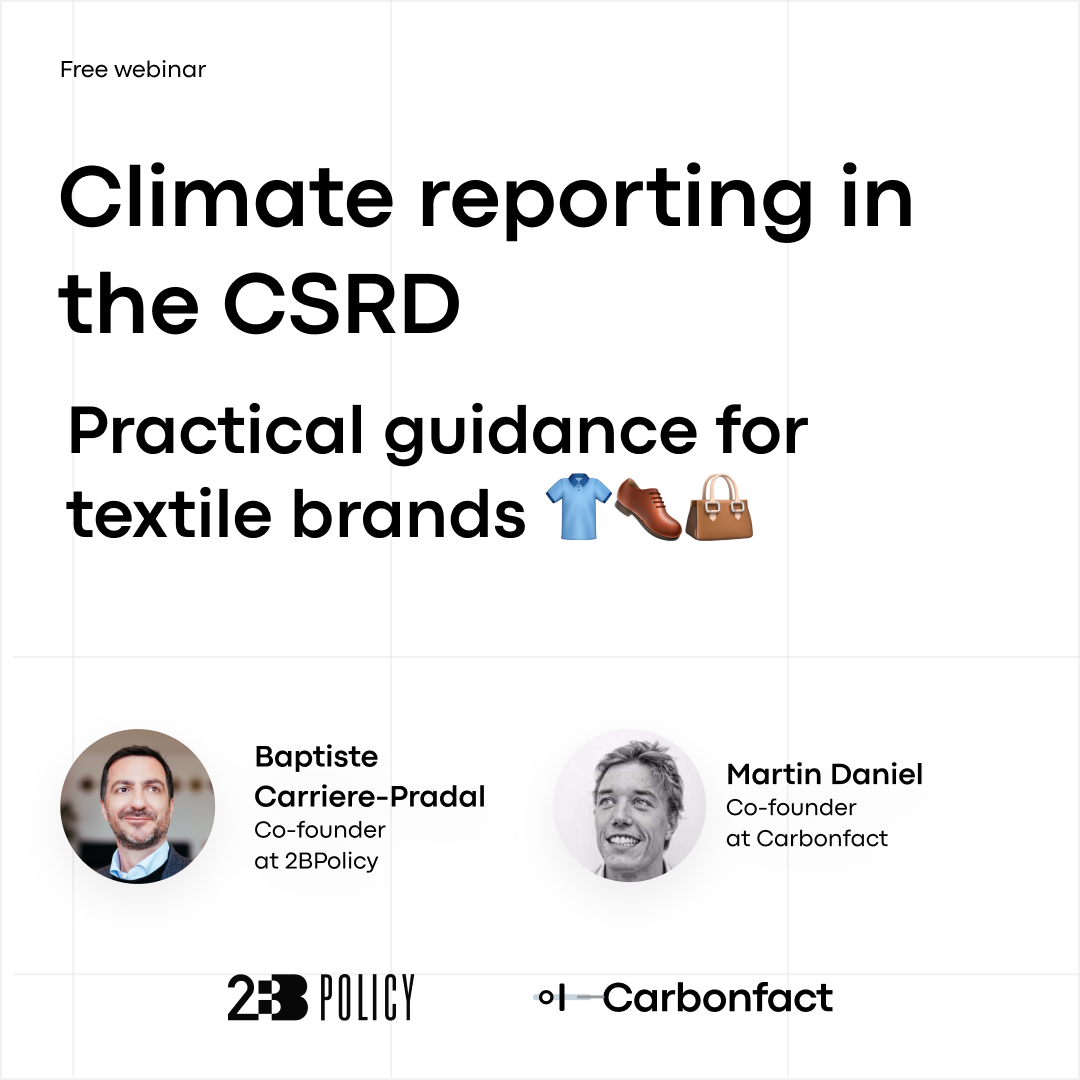CSRD reporting software
for apparel and footwear
Automate and simplify your CSRD disclosure.
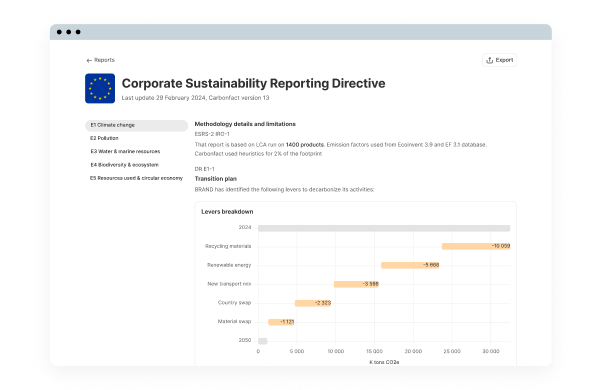
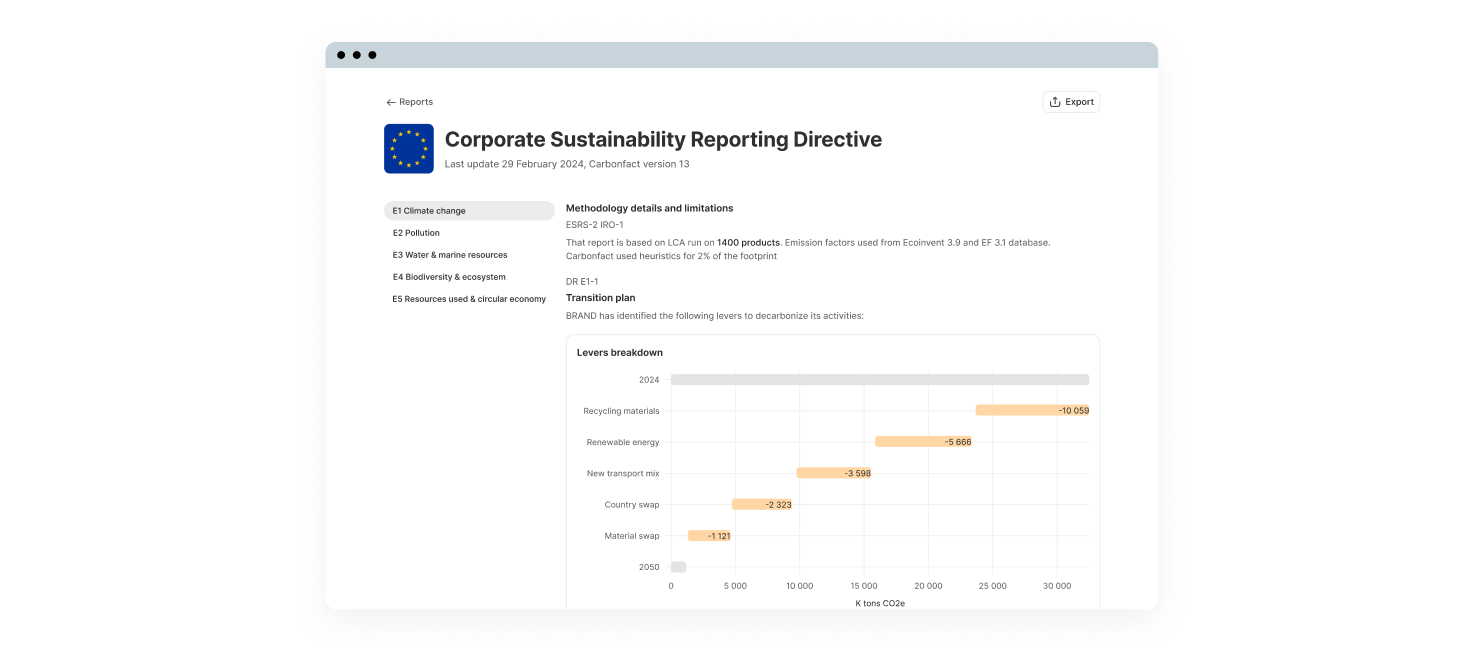
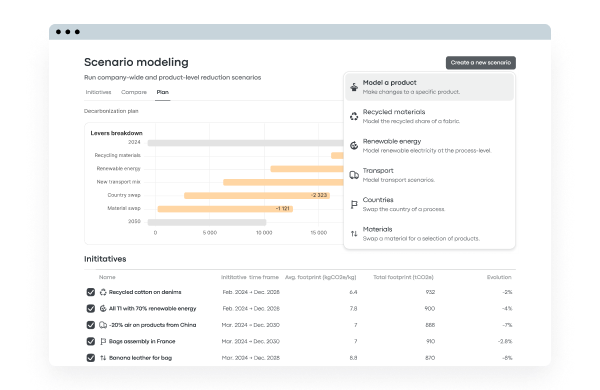
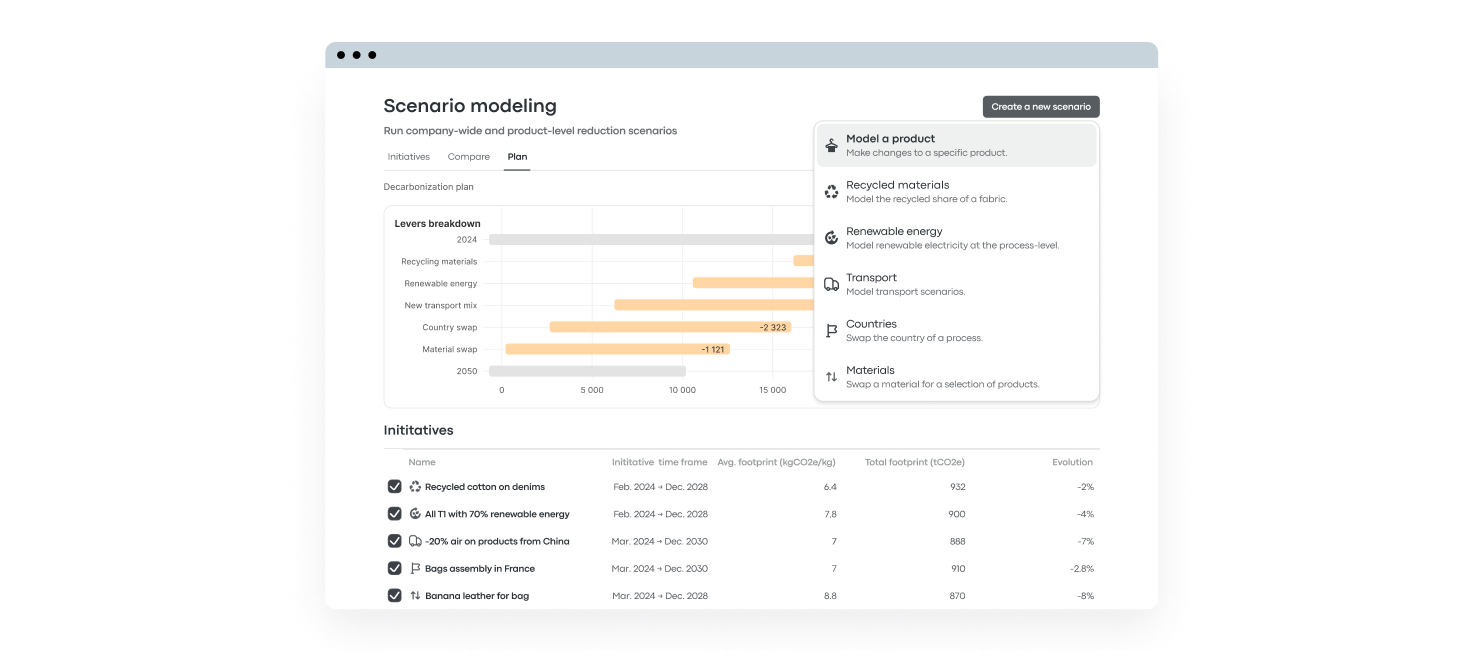
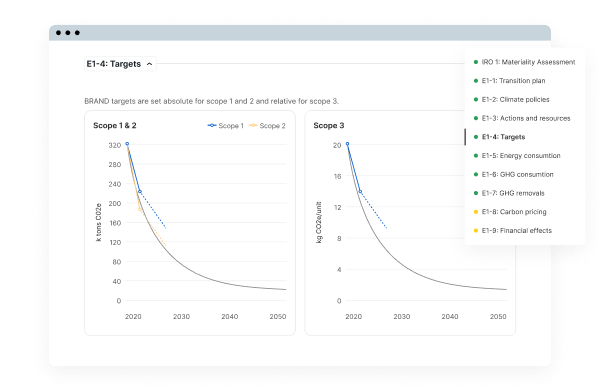
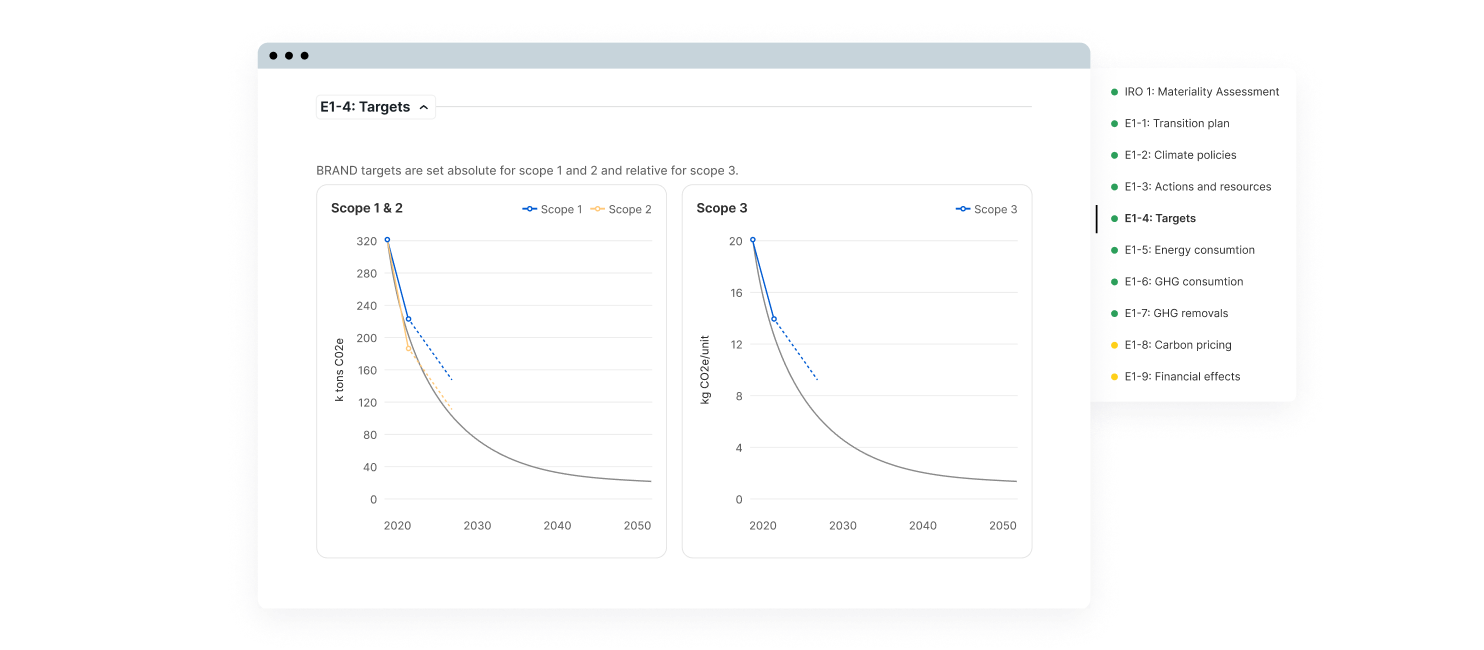
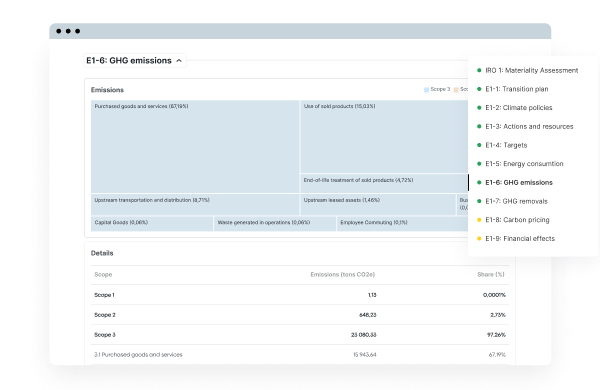
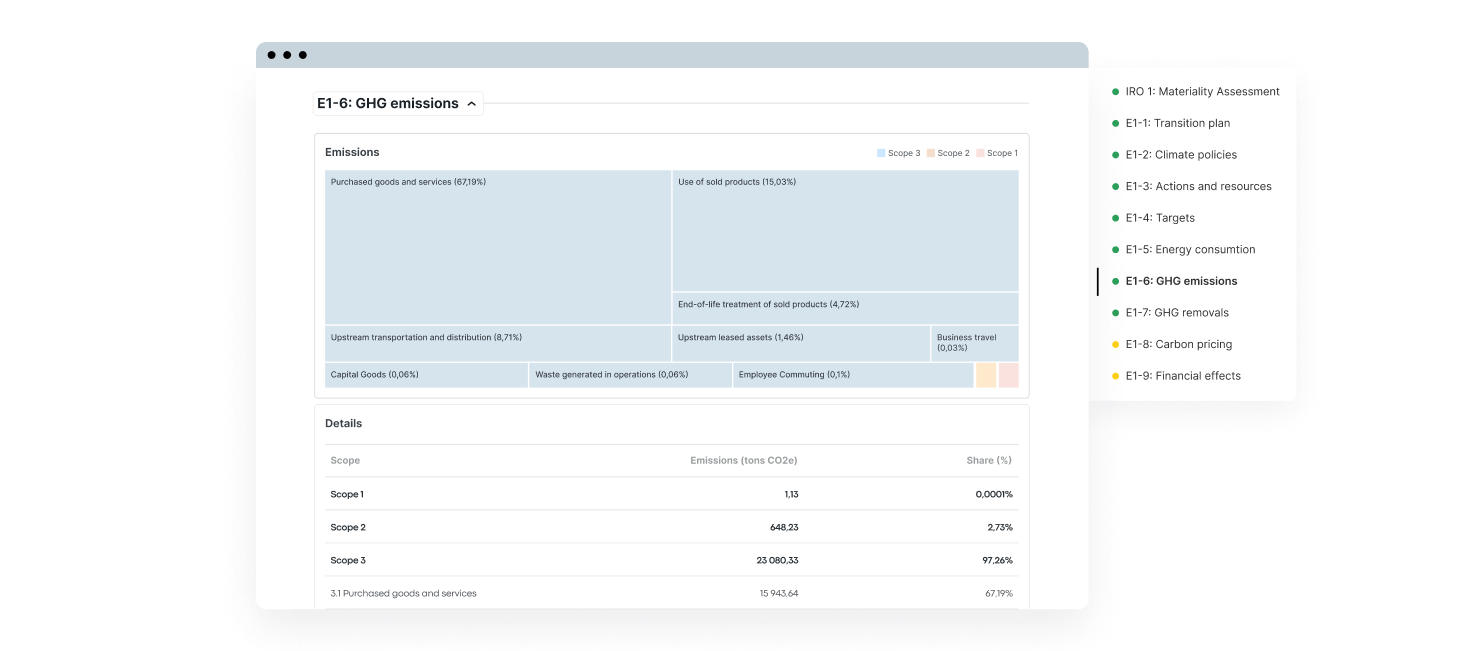
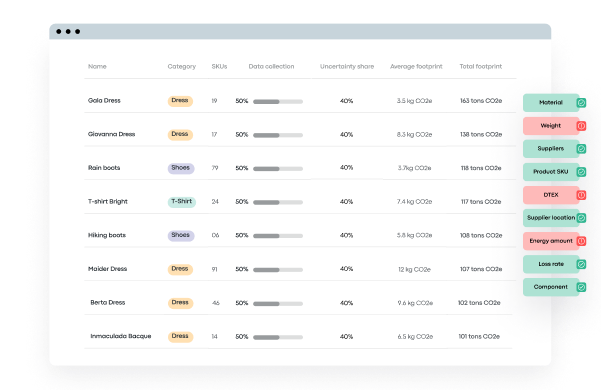
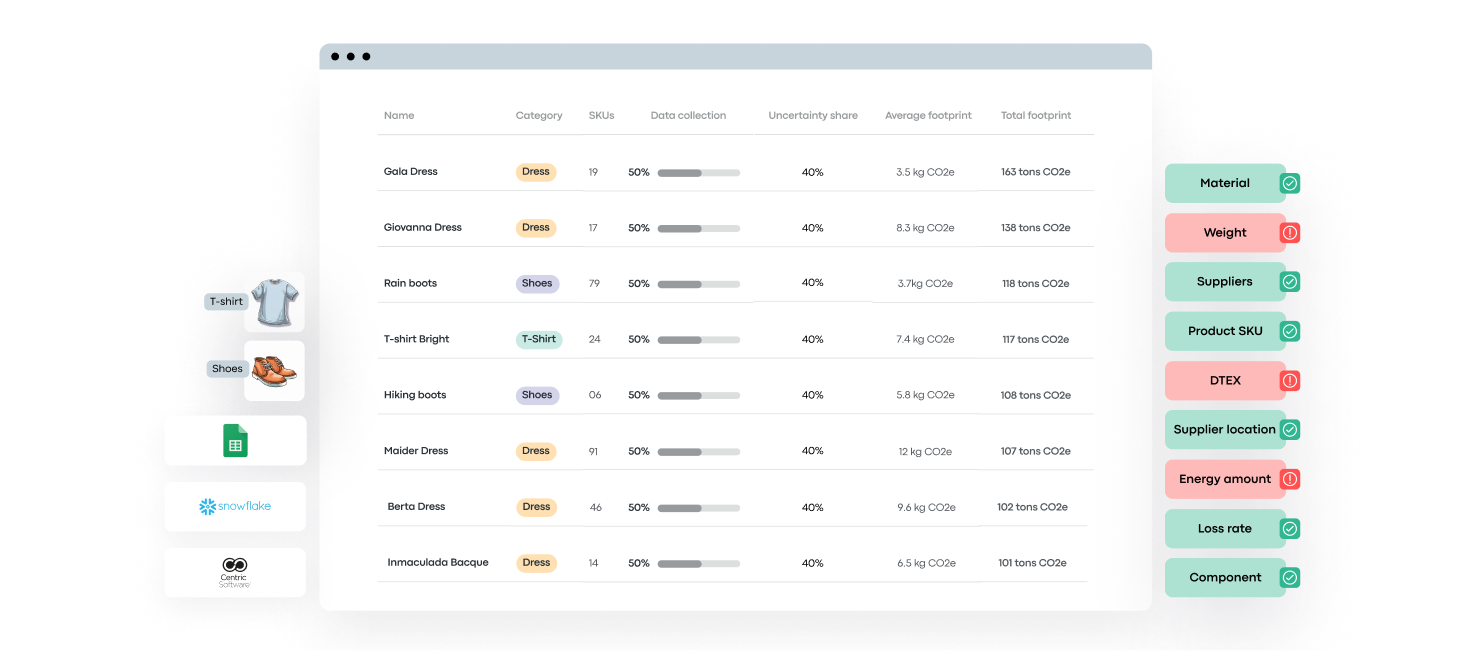
Selected by 150+ fashion, luxury and footwear brands










Built for fashion
Focused exclusively on apparel and footwear, our granular supply chain knowledge enables us to deliver the most accurate results and act as an extension of your sustainability team.
No manual work
Carbonfact’s team does the heavy lifting when it comes to importing your diverse data sets. We identifying gaps and anomalies, and fill in the missing details such as weights and dtex.
Product-centric
Thanks to our product-centric approach, Carbonfact doesn’t rely on spend-based information when calculating your emissions, making our results most accurate and future-proof with the upcoming regulations.
How Carbonfact works
Our journey begins by ingesting all your existing data. We consolidate and clean your diverse data sets, from any source, in any format. To reduce your workload to a minimum, we can build a custom connector that integrates with your existing systems, automating future data import.
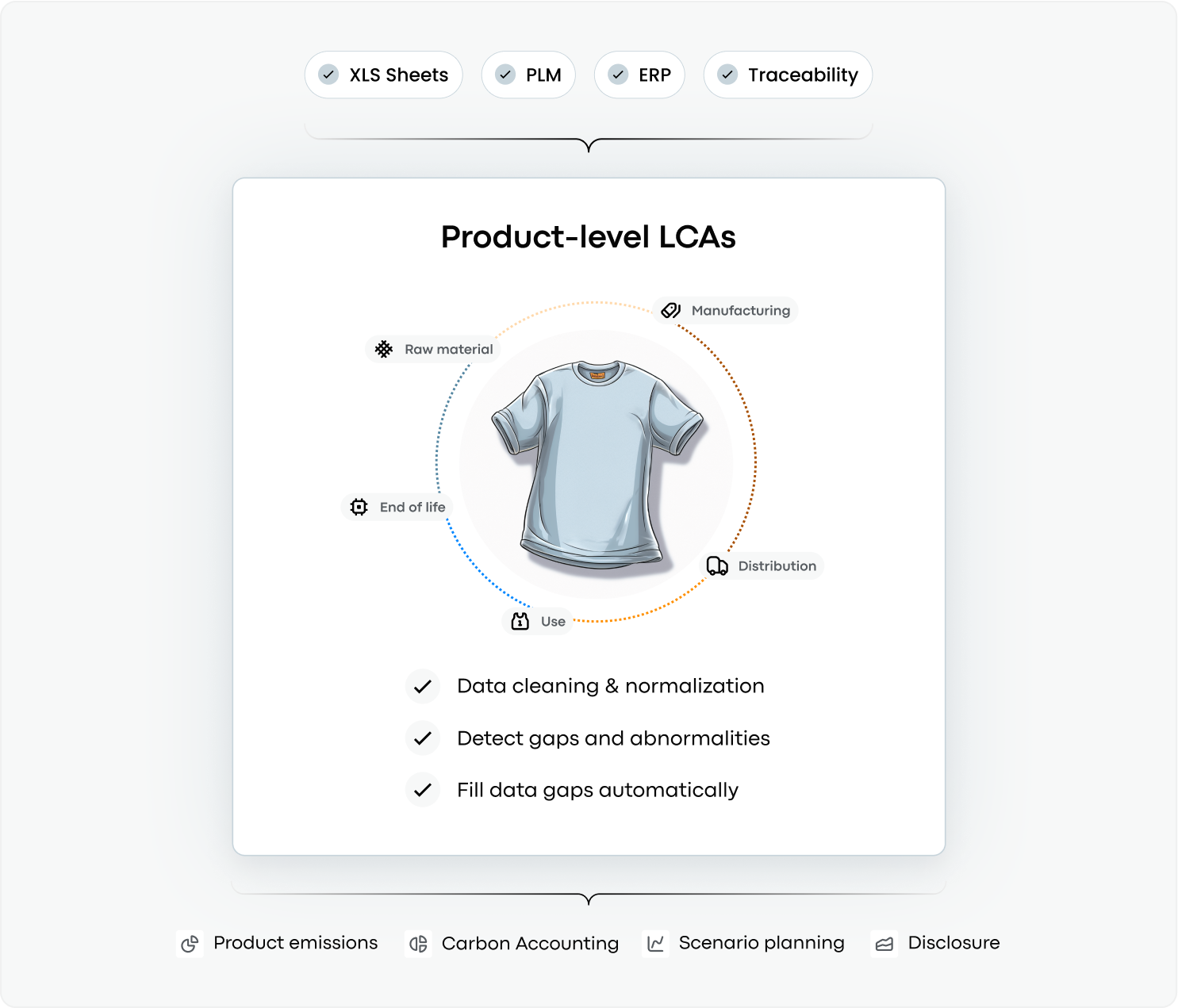
We analyze your data, detect errors and fill in your gaps. Our data module - trained on extensive primary data sets - automatically fills in missing details like component weights, d-tex, and transport.
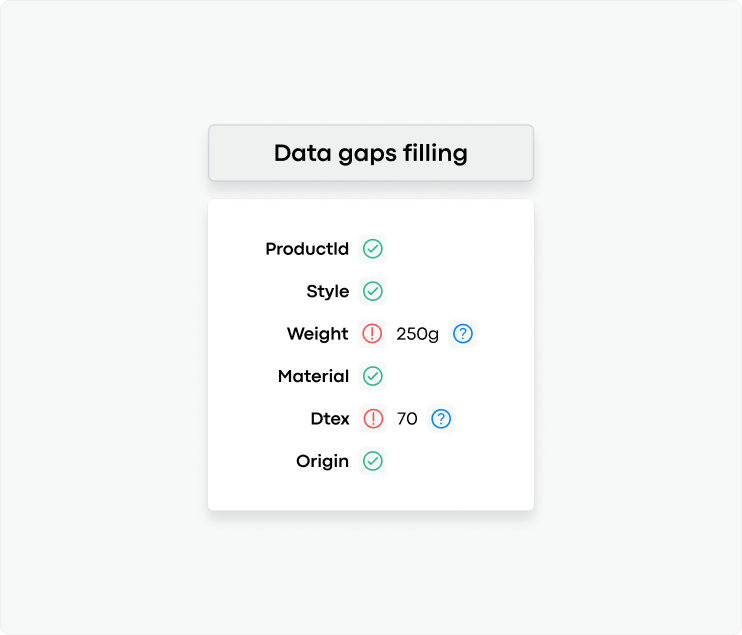
Once your data is processed, we calculate the environmental impact for each of your products and perform your GHG Protocol - compliant Carbon Accounting. We cover all environmental standards as required by the CSRD (ESRS E1-E5). To ensure the accuracy needed to build concrete roadmaps and set targets, we use activity-based data to calculate product impact.
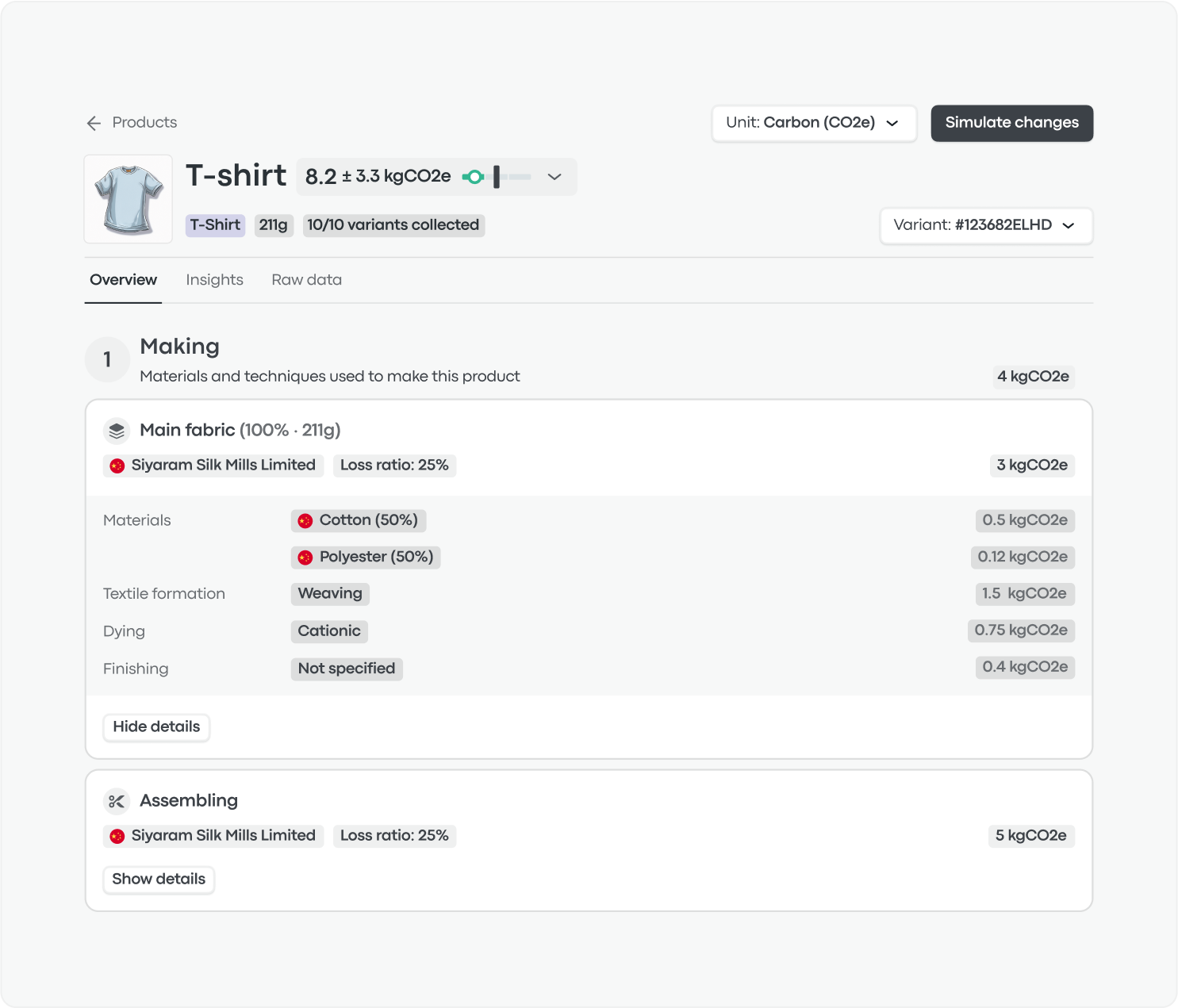
Model scenarios in your supply chain using our advanced simulation tools. You can model changes across components, materials, process steps, and transport on a product and catalog level. Group decarbonization initiatives into a roadmap and embed them in your CSRD report builder within Carbonfact.
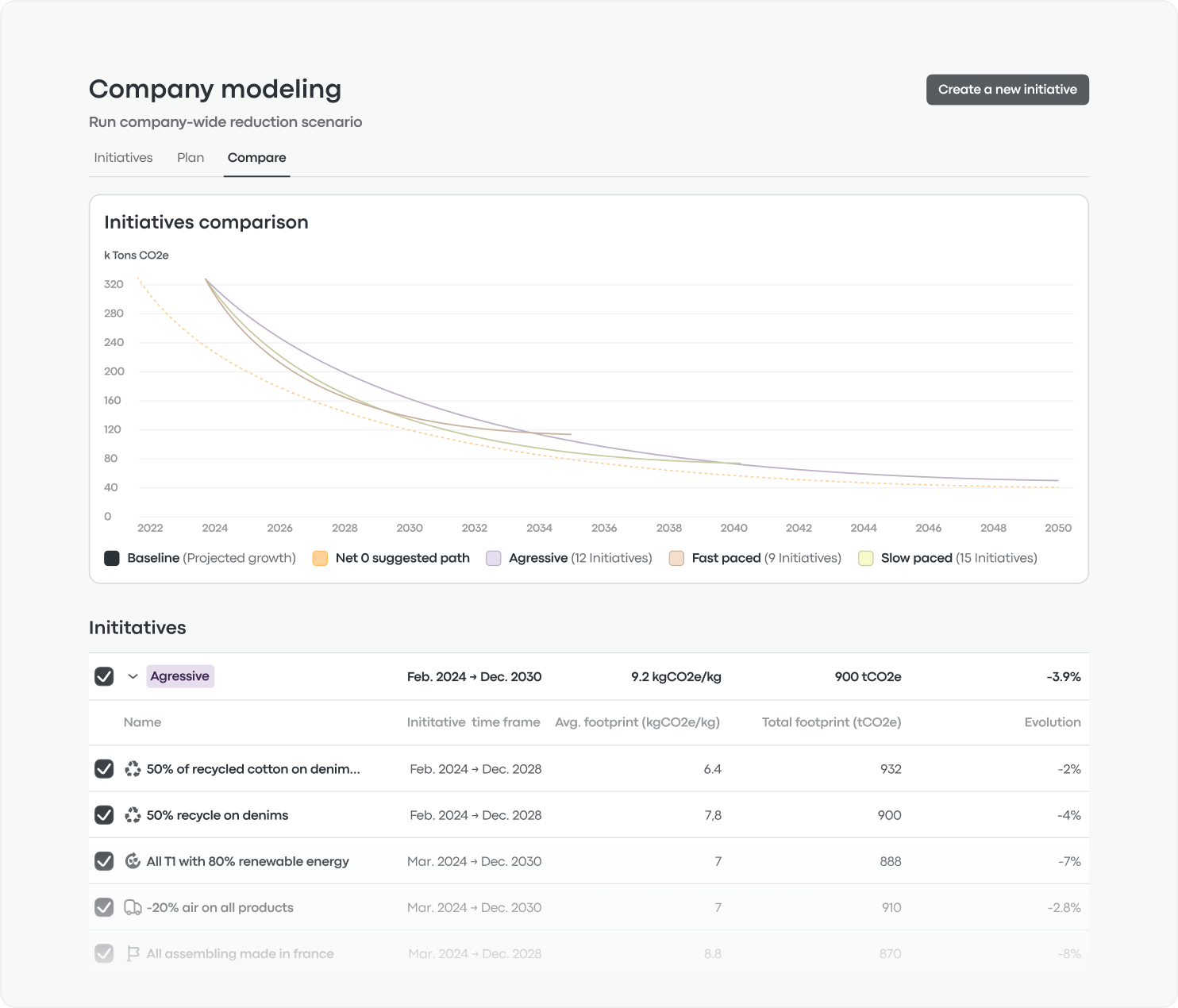
Our team of engineers, climate, compliance, and data experts is there to support you in setting realistic environmental targets aligned with a 1.5-degree economy (approved by the SBTi) and defining policy to manage the impact, risks and opportunities of environmental factors.
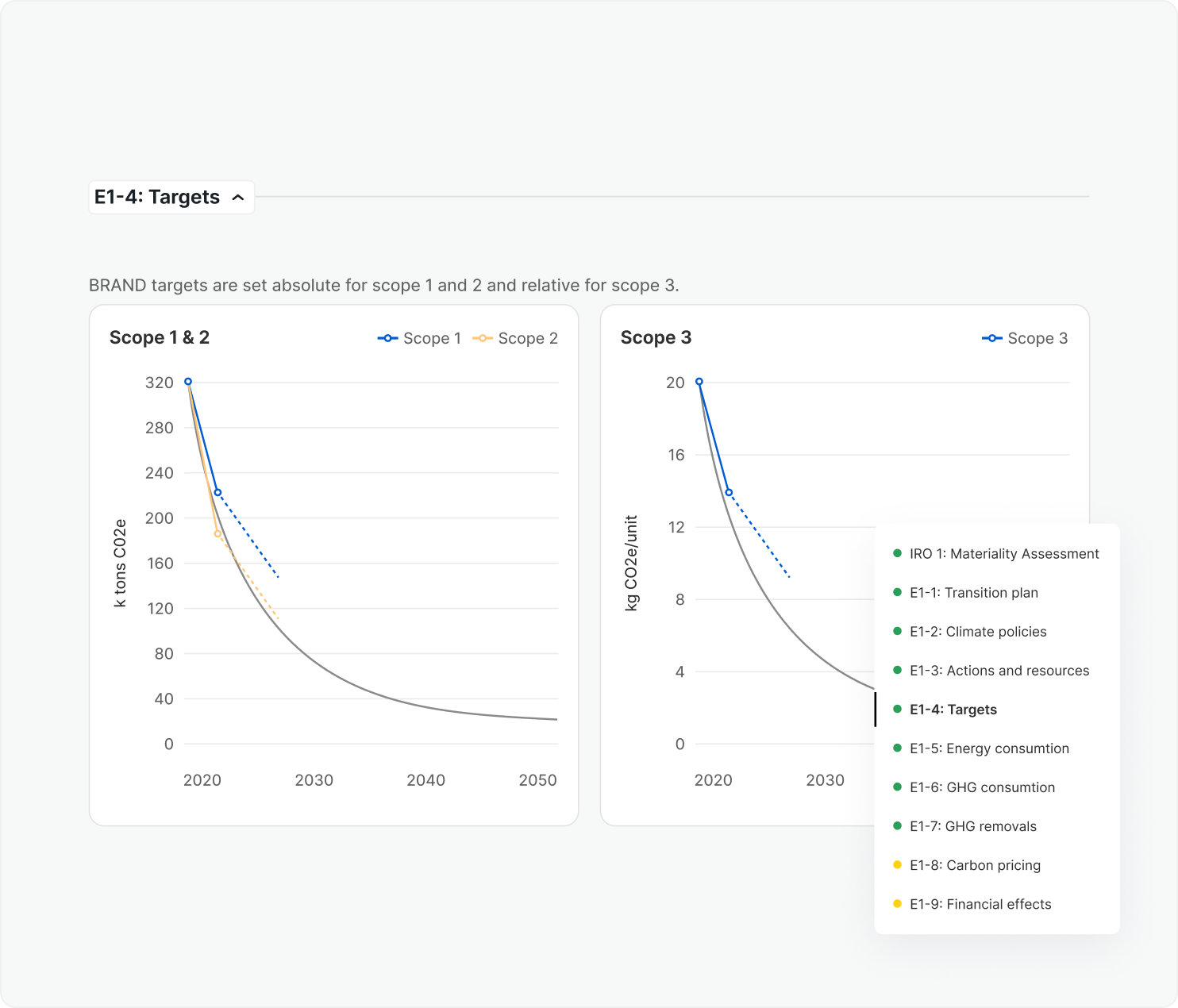
Automatic creation and formatting of your report according to the ESRS requirements, including qualitative and quantitative information. Edit the automatically created narrative and export it in an editable format that allows easy integration into your management report.
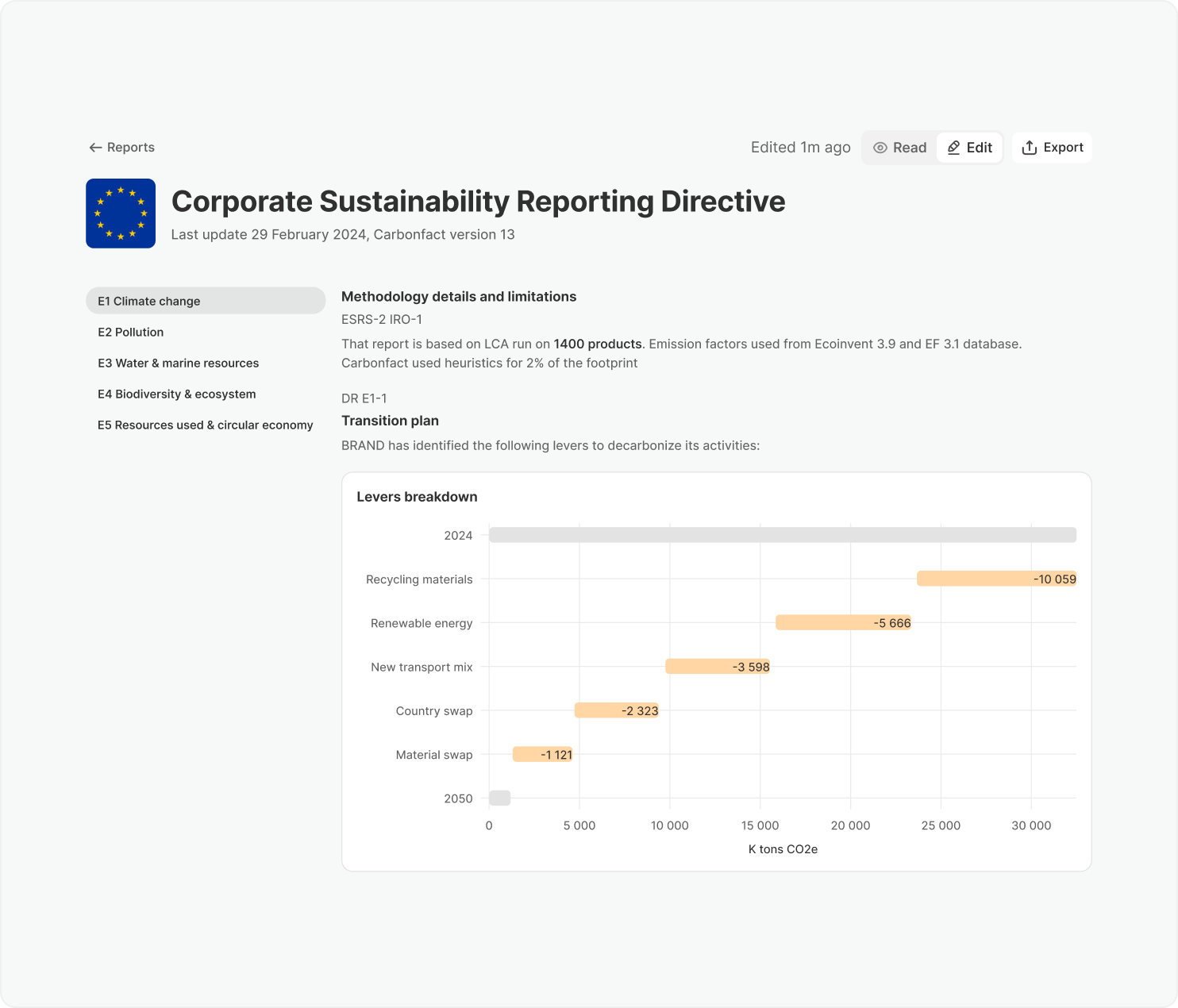






CSRD report builder
We automatically calculate and format your data for your CSRD report, for both quantitative and qualitative information requirements.
Product footprints
Environmental impact measurement (LCA) for all your products on SKU-level, in addition to GHG Protocol, Scopes 1, 2.
Data collection
Carbonfact consolidates and cleans data, fills data gaps and helps you gather the necessary supply chain data for your CSRD reporting.
Data validation
Automated error and anomalies checks, versioning and source information for every number detection ensures auditability.
Interoperability
Measure once and report everywhere. Reuse your CSRD data to submit other reporting frameworks, like CDP or ISSB.
Year-to-date insights
An automated sync of your purchase orders enables to forecast your year-end footprint and identify the drivers of changes early.
Scenario modeling
Model product- and catalog-level changes in your supply chain, and build your decarbonization roadmaps as required by the CSRD.
Science-based
Calculations are based on the ISO14040 norm, GHG protocol, and the EU’s PEFCR, meaning you can expect the highest level of accuracy and transparency.
"With an increasing number of regulations, we heavily rely on Carbonfact to supply us with reliable data for disclosure purposes. We are fully aware of the risks of greenwashing and Carbonfact proves to be an invaluable tool in ensuring that the data we share is reliable. What truly impresses us about Carbonfact is its solid, science-based methodology combined with its fashion-oriented approach, which makes us feel that they are experts in our field."

Eve Morel
ESG Compliance Officer at Adore Me
Cobalt’s goal is to proactively manage our carbon footprint in the supply chain with the partners concerned and integrate such data into our ERP system. Carbonfact has enabled us to manage processes and the reporting of our emissions, as well as to ensure we comply with government regulations in both the production countries and importing countries.

Ellen Arosio
Senior Compliance and Sustainability Manager
at Cobalt Fashion
"Allbirds was founded to create better things in a better way, a mission that inspired our laser-focus on carbon reduction -- and eventually, labeling each of our products with its carbon footprint. As we continue to grow, Carbonfact's offerings, particularly its product-level focus for footwear and apparel, ensures we can both measure our carbon footprint and actively find ways to reduce it. Carbonfact has been instrumental in helping us model different scenarios and make informed decisions that align with our sustainability goals."

Aileen Lerch
Sustainability at Allbirds
"Among the crowded market of carbon management tools, Carbonfact stood out for us. Their solution met our specific needs of automating carbon footprint calculations for all our products and emission scopes in the textile industry. Carbonfact's LCA expertise, smart approach to handling data gaps, and ability to connect and feed calculation results back into our systems were key factors that convinced us.”

Katya Kruk
Impact & Innovation Director at ARMEDANGELS
"We have moved from spend-based carbon accounting into Carbonfact to prioritise primary data and get more accurate calculations. The main reason for us to choose Carbonfact is that we now not only get our company's total carbon footprint but also break it down for each of our products. Thanks to Carbonfact’s focus on the apparel industry we get life cycle assessments with industry specific data for all our products in an easy way. Which helps us make the right decisions and reach our goal of reducing our emissions by 50% before 2030.”

Malin Bosaeus
Global Sustainability Manager
at Happy Socks
“With the help of Carbonfact's production scenario simulator, we were able to assess the environmental impact of our supply chain and make an informed decision to move part of our manufacturing from China to Vietnam. This change has resulted in a 12% reduction in the carbon footprint of our upcoming January 2024 spring collection. “

Nicolas Gand
VP Production at Adore Me
Integrations
Our automated data ingestion feature imports and syncs data from any source, in any format, eliminating the need for manual entry and minimizing data-entry errors. Whether your data is stored in a database like a PLM or ERP system, a data warehouse like Snowflake or Google BigQuery, or even an Excel file, we’ve got you covered.

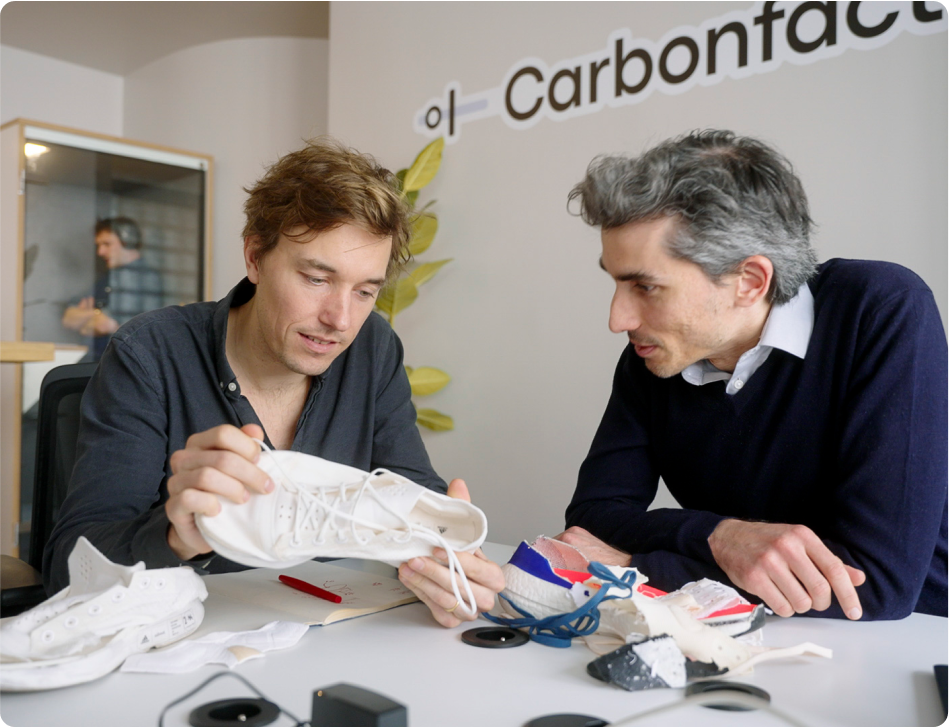
An extension of your sustainability team
While our platform handles the heavy lifting, our team of engineers, climate, compliance, and data experts is there to support you every step of the way 💪.
Direct access to our in-house climate, fashion, and LCA experts
We guide your supplier data collection and fill your data gaps
We help you design decarbonization strategies and disclosure

Full overview of the EU textile strategy and regulations
This article takes a look at the main EU climate regulations and directives. Simply explained, concrete guidance for apparel and footwear b...
 Lidia Lüttin
Lidia Lüttin
![[Textile Industry] CSRD - Corporate Sustainability Reporting Directive Reporting Requirements for footwear and apparel brands](https://www.carbonfact.com/hs-fs/hubfs/Regulations-4.png?width=600&name=Regulations-4.png)
[Textile Industry] CSRD - Corporate Sustainability Reporting Directive Reporting Requirements for footwear and apparel brands
What textile brands need to know - CSRD reporting requirements and timelines. Simply explained, concrete advise and guidance.
![[Textile Industry] CSRD - Corporate Sustainability Reporting Directive Reporting Requirements for footwear and apparel brands](https://www.carbonfact.com/hubfs/lidia%20scwared.jpeg) Lidia Lüttin
Lidia Lüttin
![[Textile brief] ESRS E1 Climate Reporting for the CSRD](https://www.carbonfact.com/hs-fs/hubfs/Regulations%20%283%29.png?width=600&name=Regulations%20%283%29.png)
[Textile brief] ESRS E1 Climate Reporting for the CSRD
Deep dive into how your fashion, footwear or apparel brand can track, measure, and report environmental impact in compliance with the ESRS ...
![[Textile brief] ESRS E1 Climate Reporting for the CSRD](https://www.carbonfact.com/hubfs/lidia%20scwared.jpeg) Lidia Lüttin
Lidia Lüttin
Frequently asked questions
What data is needed for the LCA engine to compute footprints?
Carbonfact requires specific data points related to your products to compute environmental footprints. This can include product taxonomy, weight, material composition, supplier information, and more. The data can be shared through static files like Excel or via a live connection to your data warehouse, PLM, or FTP server.
How can I provide new data to Carbonfact?
You can provide data through a live connection to a database, or by providing static exports like Excel files. A live connection is preferred for real-time insights.
What's the process for setting up a live data connection?
Setting up a live connection may begin with sharing static files. The optimal setup includes providing access to tables in your database like PLM, ERP, or data warehouses like Snowflake or Google BigQuery. Carbonfact can build a dedicated connector to your data.
What if I don't have all the required data?
It's okay if you don't have everything at first. Carbonfact will do its best to fill in the gaps and provide analytics to help you prioritize your data collection process.
How does Carbonfact handle data normalization and organization?
Carbonfact builds a dedicated connector to your data and uses normalization logic, heuristic rules, and machine learning to organize your data according to the internal data model called the Carbonverse.
How does Carbonfact communicate with customers?
Carbonfact typically communicates through a main point of contact and identifies key stakeholders across various teams. A shared Slack channel is used for meeting notes, action items, and questions.
What are the main stages of the customer journey with Carbonfact?
The customer journey with Carbonfact is broken down into three main stages: Collect, Measure, and Reduce. These stages involve connecting to your systems, measuring carbon footprint at the product level, and simulating alternative materials, suppliers and components to reduce carbon emissions.
How does the Reduce phase help to lower carbon emissions?
The Reduce phase helps you model and simulate product-level changes to your overall carbon trajectory. Starting from Week 10, you can work on reduction strategies and simulations, using tools that allow you to run what-if scenarios and visualize the carbon impact of changes to materials and components.
What does the onboarding process involve?
Our personalized onboarding process involves a dedicated team of data scientists and engineers working closely with your tech, data, production, and sustainability teams to consolidate and collect all available primary data. We also clean, parse, and build a custom connector to all your systems.
What professional services do you provide for reducing environmental impact?
We assist in identifying opportunities to reduce your impact and support building your decarbonization strategy and SBTi trajectory. Our services include corporate- and product-level strategy design, compliance advisory, SBTi support, carbon accounting, ESG reporting, data quality checks, and premium support with regular alignment meetings.
How do you ensure compliance and prevent greenwashing?
We provide advisory services to guide your communications campaigns, helping you stay compliant with existing and upcoming regulations and policies, and preventing greenwashing.
Is primary data being gathered by Carbonfact? Or are all calculations done with secondary data (from databases)?
Carbonfact integrates both primary and secondary data. The platform starts with secondary data for initial assessments but progressively incorporates primary data from the brands as it becomes available. This allows the system to refine its accuracy and reduce uncertainty over time.
Can the Carbon Accounting calculations be directly used in the ESRS E1 reporting or does it require additional calculations?
Yes, Carbonfact’s CSRD ESRS reporting has been implemented on a technical foundation that ensures that the GHG emissions numbers generated can be directly used in the ESRS report under the application of the relevant format and units generating the report without requiring additional calculations. This means that Carbonfact can directly output data in the format and units required by the ESRS that are fully compatible with ESRS specifications covering environment-related disclosures. For instance, outputs must detail emissions by type (CO2, CH4, N2O, etc.), source (e.g., stationary combustion, purchased electricity), and scope (1, 2, and 3). Carbonfact breaks down the emissions relevant to various organizational/business activities as specified in ESRS, ensuring no need for additional recalculations.
How is the data formatted in Carbonfact:
Carbonfact’s automatic report generation utilizes pre-defined technical templates that align with ESRS reporting frameworks. This method ensures that inputted data on the platform is directly transferred into the official report sections and format. Furthermore, the platform offers downloadable and exportable formats that match the ESRS layout. Sector-Specific Customization: Carbonfact exclusively caters to the apparel, textile, and footwear industries. The platform is designed from the ground up to allow customization of data inputs and emission factors to reflect industry-specific realities, which is critical for accurate ESRS reporting. Carbonfact incorporates features for dynamic updates to emission factors and methodologies per the latest ESRS guidelines.
How can you ensure the data calculated from your tool will fulfill all ESRS E1 reporting requests?
- Carbonfact meticulously aligns our data module with the specific standards and guidelines outlined in the ESRS. This involves a precise mapping of the Carbonfact platform's data outputs to the specific indicators and data points required under ESRS E1, which focuses on climate change-related disclosures.
- Carbonfact has taken a proactive approach to ensure that updates and configurations of the platform can be re-iterated should there be a necessity to align with any updates in the ESRS requirements. This ensures the reliability and up-to-dateness of our tool.
Is the software ready to be examined during an assurance process?
Yes, Carbonfact has implemented robust data verification processes within our data module to ensure accuracy in data inputs and respective footprint calculations. This includes using validated data sources, employing industry-standard calculation methodologies (such as those recommended by the GHG Protocol), and ensuring data traceability. Furthermore, the Carbonfact Changelog is an integrated feature (co-developed with PWC) that allows easy audit trails and third-party verification to ensure compliance with ESRS requirements. Carbonfact’s methodology itself is audited by PWC.
Is it possible to include the CSRD report into existing reporting? Or, does it have to be a separate, independent document?
The CSRD report has to be part of your official management report, you can simply export it in different formats from Carbonfact and embed it in any other document.
What are the input data to your software to calculate scope 1 and scope 2 for a retailer?
- We follow the Greenhouse Gas Protocol when performing your Carbon Accounting.
- For Scope 1 and 2 we will need information on facilities and vehicles and information on energy usage, such as utility bills. We will give you a list of data points to collect.
Is the ESRS E1-5 on energy consumption for the company (Scope 1 and 2) or does it include the whole value chain (Scope 3) as well?
- It also includes Scope 3 emissions. Carbonfact helps you collect the information needed to measure and report energy consumption across your value chain.
- What type of database are you using in your software solution?
- We use the European Union's EF 3.1 database.
How do you ensure compliance and prevent greenwashing?
We provide advisory services to guide your communications campaigns, helping you stay compliant with existing and upcoming regulations and policies, and preventing greenwashing.
